 |
All of the images in this article were shot with a pre-production Fujifilm GFX 100 and are used with permission. Image quality may not represent exactly the output from final shipping cameras but is likely to be extremely close. Likewise, images of the camera may show minor cosmetic differences compared to final shipping units.
It’s exceedingly rare that I get to feel cool, especially at work. But every now and then an opportunity arises to do something, go somewhere or see something that makes me pinch myself. Just such an opportunity came up recently, when I spent a week shooting with a pre-production sample of Fujifilm’s new GFX 100 in Florence, Italy – the birthplace of the Renaissance.
I’ve been fascinated by the GFX 100 since we got a sneak peek of the camera still under development, earlier this year. And 18 year-old me loved the few days I spent in Florence in 2000, the summer before I went off to waste British taxpayers’ money for four years at university. Nineteen years on, could I recreate the sights and sounds of that heady teenage summer? Unlikely. And probably for the best. But at least this time I wouldn’t have to carry around a bag full of 35mm film.
The camera I was shooting with in Italy would have blown my teenage brain (admittedly not a difficult thing to do). Officially a beta test sample, Fujifilm handed over a pre-production GFX 100, running non-final firmware.
During shooting I did indeed experience occasional glitches, and some aspects of the camera’s performance and operation were very obviously unfinished. As such, this is not going to be a detailed, review-style write up of my experience. It can’t be. So given all of these caveats, what can I actually say about the camera?
Well: It sure does smell nice! Congratulations – you just read the shortest ever shooting experience article on DPReview.
 |
|
Proud parents rejoice: Finally, a 100MP medium format camera that’s fast and responsive enough for quick grab shots of a toddler. With face and eye-detection and PDAF, the GFX 100 is a powerful portrait camera in autofocus mode. ISO 160 | 1/320 sec | F2.8 | 45mm F2.8 |
If you’re still reading this, you either figured out I was joking, or you’re predisposed not to believe what you read on the Internet. Either way, thanks for sticking around.
There’s actually quite a lot I can say about shooting with the GFX 100, predictable pre-production bugs and glitches notwithstanding. Ironically, perhaps my biggest takeaway from using it for a week was just how finished this supposedly unfinished camera felt. In almost all important respects, the prototype GFX 100 camera I was using just worked. It worked so well in fact, and so intuitively, that within a few hours I wasn’t paralyzed by worry over the enormous responsibility of chaperoning a hand-built, embargoed, prototype camera around a foreign country. I was just enjoying the experience of shooting with it. And the pizza. I really enjoyed the pizza.
With its EVF attached, the GFX 100 actually has almost exactly the same ‘footprint’ as a Nikon D5
Compared to the GFX 50S and 50R, the GFX 100 offers a handling and shooting experience that is largely familiar, but in some ways quite different. The most obvious difference is that it’s a lot bigger than either camera. The integrated vertical grip accepts two batteries, and increases the size of the body to roughly that of a professional DSLR. With its EVF attached, the GFX 100 actually has almost exactly the same ‘footprint’ and weighs about the same as a Nikon D5, although of course its mass is distributed within a slightly different form factor. With the EVF removed, the GFX 100 is actually much easier to pack into a bag or hard case than a D5 or Canon EOS-1D X II, since it basically becomes a square slab.
 |
| The GFX 100’s EVF is removable, at which point the camera becomes much easier to pack into a bag or case for storage. |
The second major difference compared to earlier GFX models is that Fujifilm has ditched the consciously retro styling of the older cameras in favor of a somewhat more severe, push button and dial-driven interface of the kind pioneered back in the 80s by Canon in the T90 and EOS-1 series SLRs.
Much as I respect Fujifilm’s tendency to put big chunky dials on many of their cameras from an aesthetic point of view, I don’t tend to use them in practice. Come to think of it, I haven’t used a shutter speed dial on a multi-mode camera since the Nikon F4. Since these days I tend to shoot using automatic ISO, that dial stays locked to ‘A’, too. I appreciate a physical dial for exposure compensation, but I can live without it.
It’s harder to unintentionally press a button and simultaneously scroll a command dial than it is to knock a dedicated dial out of position
As such, I have no problem with the GFX 100’s more button-driven interface, and in fact in a camera like this I tend to prefer it. When it comes to preventing accidental setting changes, it’s much harder to unintentionally press a button and simultaneously scroll a command dial than it is to knock a dedicated dial out of position against your hip, or when moving the camera in and out of a bag.
A lot of people seem unkeen on how the GFX 100 looks but I actually quite like it. Yes, it resembles an overgrown games console from the early 90s, and the blueish gray finish is very different to any other camera on the market, but it works, and hell, at least it’s different.
 |
| The rear screen is partially articulated, which is nice. But the ‘Q’ buttons on the two handgrips are very prone to be accidentally bumped. Here you can also see the lack of rubber coating on the vertical grip. |
There are only three aspects of the GFX 100’s handling and operation which I feel could use some work. For starters, the exposure compensation buttons (one on the top plate, one on the vertical grip) are ergonomically different to one another, and both proved rather hard to locate when my eye was to the camera’s EVF. I fully expect that in final shipping cameras, it will be possible to repurpose the rear command dial for ‘quick exposure compensation’ in AE modes, and on that assumption, the exposure comp. button issue isn’t a show-stopper.
Harder to work around is the Q button – especially the one on the vertical grip – which I managed to constantly press by accident when I was handling the camera in preparation to bring it up to my eye. This is pretty much the same issue that has been widely reported with the X-T30, and to Fujifilm’s credit, a firmware update was swiftly issued to address the problem. My final gripe is a fairly minor one – I do wish that the vertical grip was a bit more contoured, and in contrast to the pleasantly textured rubber on the main grip, the bare metal can get a bit slippery after extended handling.
In pretty much every other respect the GFX 100 works very well. If you’ve used the X-T3 or one of its various stablemates, you’ll feel right at home. Even if you’re coming from a DSLR or mirrorless ILC from another manufacturer, the learning curve should be pretty shallow.
 |
|
This image was shot during the 1/60sec interval in mid-May of this year during which there were no American tourists visible in Florence. ISO 200 | 1/60 sec | F11 | 45mm F2.8 |
That’s the externals dealt with, but the real appeal of the GFX 100 lies less in what it looks like, and more in what it can do. And oh boy, it can do a lot. I’ve shot with the GFX 50S quite a bit, and I really enjoy using it, but even if I was a working commercial photographer I would probably never buy one. Files from the 50S are great, but they’re not technically better than the output of the best full-frame DSLRs and mirrorless ILCs. Meanwhile, the 50S’s autofocus performance and viewfinder experience – while usable – compare poorly to competitive full-frame and APS-C cameras. The GFX 50S and 50R are fantastic cameras, no doubt, but not fantastically better than the smaller and lighter alternatives I have at my disposal.
Reading through the spec sheet of the GFX 100, you get the sense that Fujifilm’s engineers were showing off
The GFX 100, on the other hand, blows the 50S and 50R out of the water. The viewfinder is sharper and clearer, the autofocus performance has been hugely improved (Fujifilm claims a more than 200% speed boost compared to the previous GFX models) and in every respect the camera just feels faster and more responsive. Not to mention the fact that it includes sensor-based image stabilization, and powerful 4K video features. In fact, reading through the official spec sheet of the GFX 100, you get the sense that beyond a certain point Fujifilm’s engineers were simply showing off – and who can blame them.
 |
|
The detail in JPEG files from the Fujifilm GFX 100 is extraordinary, and we’re eagerly awaiting Raw support to really see what those pixels can do. ISO 640 | 1/160 sec | F10 | 100-200mm F5.6 |
The fundamentally Big Deal here is that the GFX 100 is the first medium format digital camera to really compete with modern full-frame DSLR or mirrorless ILCs in terms of everyday shooting versatility. Obviously it’s not designed for shooting sports or action, but for portraiture, landscapes, travel and street photography, virtually the only thing that the GFX 100 can’t do is fit into a pocket.
We’re talking here about a 100MP hybrid stills / video camera with usable (in fact very good) autofocus that isn’t intended primarily for use in a studio. And for the first time, thanks to a new back-illuminated CMOS sensor, the GFX 100 should be able to deliver images that are not only bigger than contemporary full-frame cameras, but better. We’re still waiting to dig into the Raw files, but we’re expecting an increase in Raw dynamic range over both the GFX 50S and Nikon D850 at ISO 64.
Smaller sensor formats will probably always win in terms of ultimate versatility (the GFX 100’s sensor readout isn’t fast enough to match the silent shutter shooting abilities of, say, the Nikon Z7, but the GFX 100 gets impressively close. Taking a series of portraits in rapid succession (continuous shooting maxes out at 5 fps in 14-bit Raw mode) with face and eye-detection turned on, I kept forgetting I was shooting medium format.
 |
|
All of those pixels are lovely, but they don’t come cheap. This JPEG file is 62MB in size, and 14 and 16-bit Raw files are even bigger. This could be a major consideration when it comes to file management and archiving. ISO 160 | 1/220 sec | F11 | 45mm F2.8 |
Until I started to download the files, of course. One of the downsides of the GFX 100’s impressive operational speed is that you might find yourself burning through card space rather more quickly than you had anticipated. And with even JPEGs ranging between 30-70MB each, file management on a computer can be a frustrating experience. I wasn’t able to try out the 16-bit Raw mode with the camera we used in Italy, but with those files likely in the hundreds of megabytes each, 16-bit file storage could quickly become a headache.
The GFX 100 now offers phase-detection autofocus, covering almost 100% of the frame
While I don’t want to (and can’t) get into too much detail around specifics, I imagine you’d like to know how well things like autofocus, IBIS and video work on the GFX 100. The short answer in all cases is ‘very well, thanks for asking’. The GFX 100 now offers phase-detection autofocus, covering almost 100% of the frame. AF speed is still to some extent lens dependent (as we’d expect), but on a fast GF lens, like the 23mm F4, focus is acquired very quickly in AF-S mode, with no hunting in normal lighting conditions. I didn’t get the chance to test AF-C performance in any real depth, but I can say that it’s much improved over the GFX 50S/R, as we’d expect from a PDAF system.
The in-body stabilization system is rated according to Fujifilm for up to 5.5EV. In my shooting I didn’t see that kind of performance consistently, but I was able to shoot confidently down to at least 1/10 sec with the 45mm F2.8 prime attached, which allowed me to shoot in lower light and after a couple more glasses of Chianti than I could have done otherwise. Stabilization also gives you the option of introducing movement into images from (say) flowing water or traffic without the need to resort to a tripod.
 |
|
This shot was taken hand-held using the GF 45mm F2.8 at 1/5sec. While very slight blurring is visible at 100%, the GFX 100’s in-body stabilization system has delivered an acceptably sharp image at well below 1/FL. The IBIS system greatly adds to the camera’s versatility in poor light. ISO 800 | 1/5 sec | F5.6 | 45mm F2.8 |
While I was mostly focusing on stills, i did shoot some 4K video with the GFX 100 in Italy, and at its maximum 24p bitrate, footage looks incredibly detailed, with almost no noticeable noise even at ISO 3200. It almost seems surreal to be discussing 4K video shooting with a medium format camera, but video is far from an afterthought in the GFX 100’s feature set, and we’re looking forward to digging into this feature more when we get hold of a final camera.
For now, as you can probably tell, I’m very impressed. Obviously though, the GFX 100 isn’t for everyone. If you’re asking yourself ‘do I need 100MP?’ then the answer is almost certainly ‘no, you don’t – get off the Internet and go and play in the sunshine’. To be honest, I think photographers would be well-advised not to drop $ 10,000 on any camera unless they expect it to make some money back for them.
But if I was a commercial photographer or a professional wedding / portrait shooter, I would seriously consider the GFX 100, despite the substantial initial cost. It offers greater resolution and almost certainly better Raw image quality than any full-frame camera on the market, with none of the limitations or frustrations of previous medium format models. Add in-body stabilization, fast and effective autofocus and a human-friendly interface into the mix (and lest we forget, really good 4K video) and $ 10,000 doesn’t look unreasonable.
Fujifilm GFX 100 pre-production sample images
$ (document).ready(function() { SampleGalleryV2({“containerId”:”embeddedSampleGallery_6044553814″,”galleryId”:”6044553814″,”isEmbeddedWidget”:true,”selectedImageIndex”:0,”isMobile”:false}) });
Articles: Digital Photography Review (dpreview.com)



















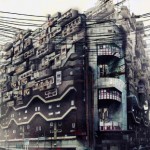
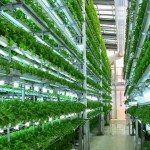














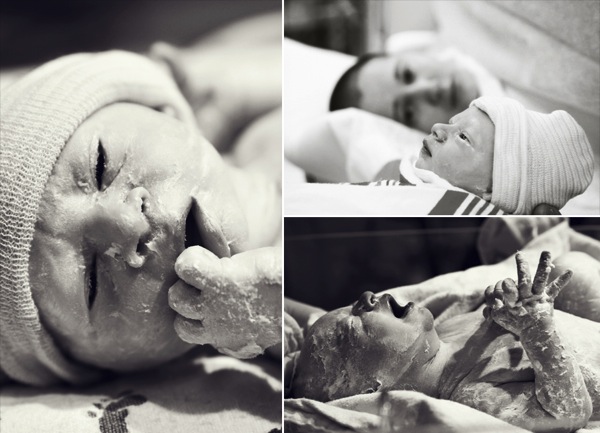

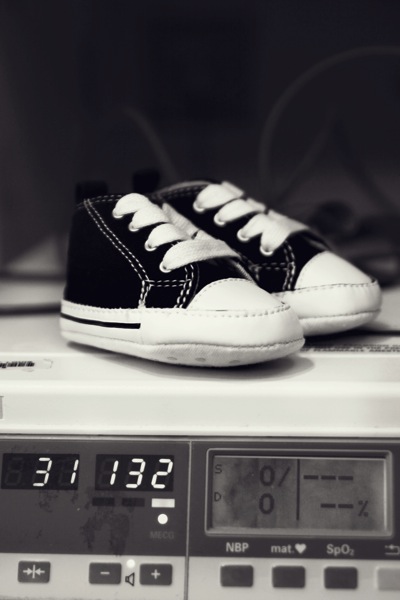
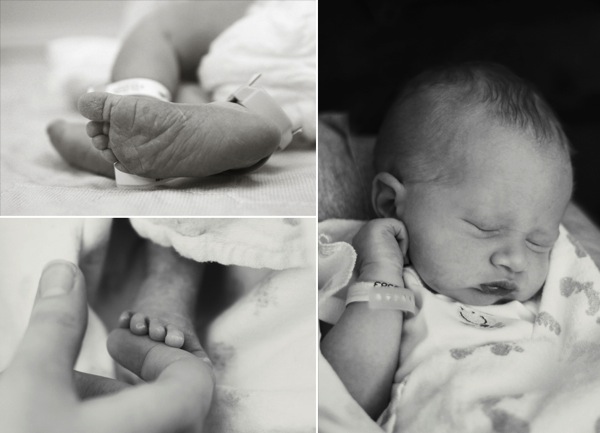



You must be logged in to post a comment.